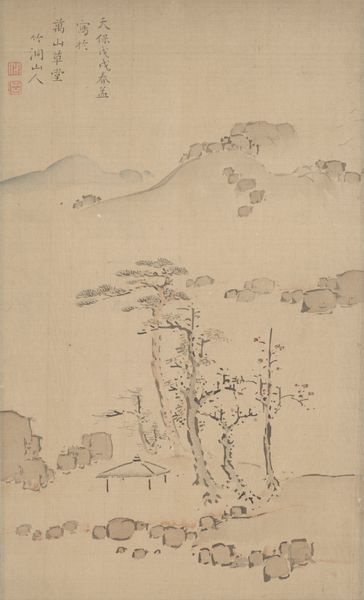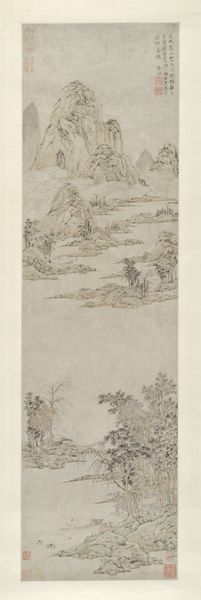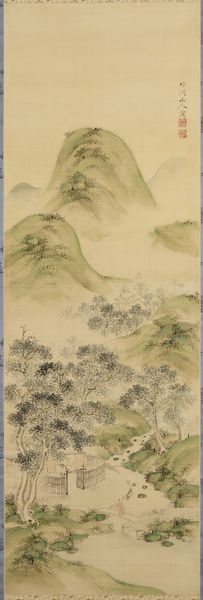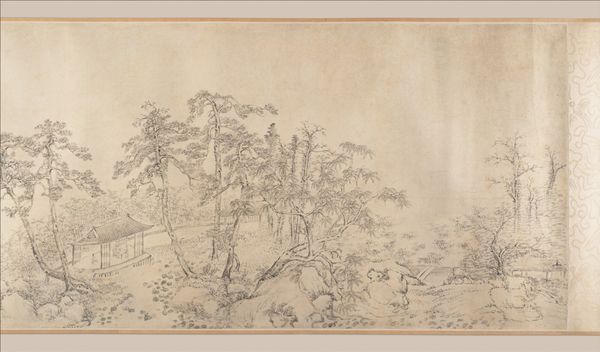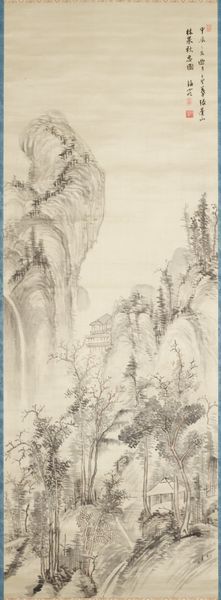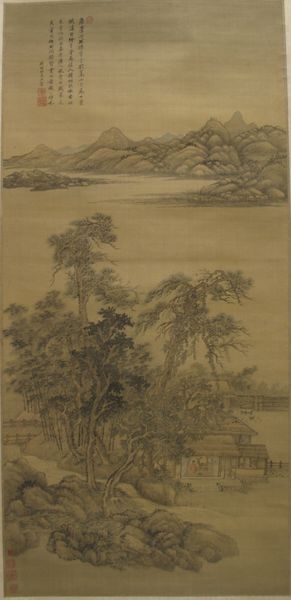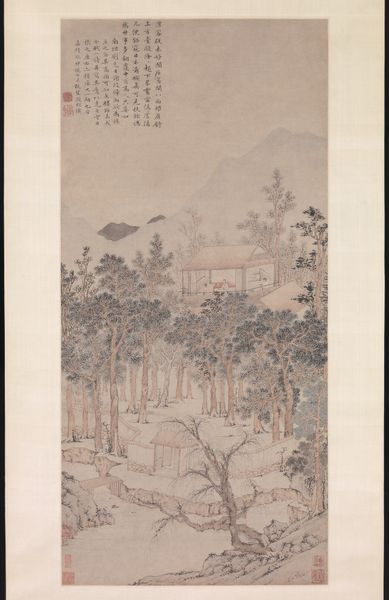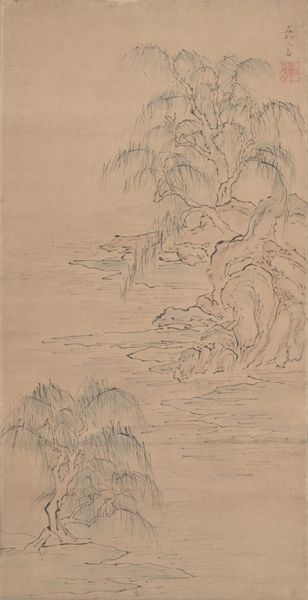
Autumn Moon over Sumida River (Sumida aki zuki), from the series "Eight Views of the Sumida River (Sumidagawa hakkei)" c. early 1760s
0:00
0:00
Dimensions: 12 3/8 × 5 5/8 in.
Copyright: Public Domain
Curator: Looking at this woodblock print by Kitao Shigemasa, titled "Autumn Moon over Sumida River," from the series "Eight Views of the Sumida River," created around the early 1760s, I'm immediately struck by the muted color palette. Editor: Yes, there's a softness to the tones, isn’t there? An almost ethereal quality enhanced by what appears to be aged paper. I am mostly drawn to the dynamic between foreground and background, flatness against a shallow depth. The bold colors of the two figures offset by the fading background hues of a distant, atmospheric landscape. Curator: This contrast of the bold figures against the soft background landscape can be better understood within the context of ukiyo-e tradition. "Pictures of the Floating World," were made during the Edo period in Japan when the merchant class were becoming powerful. Here we see an engagement with seasonal themes alongside idealized views, reflecting that social and economic reality. Editor: Certainly, though I see more going on compositionally than simple realism. The perspective feels flattened, almost abstracted, pushing the Sumida River view into a more decorative register. Take a look at how Shigemasa utilizes line to define form. The sinuous rendering of clouds, trees and costumes creates an image of harmonious balance. The formal relationship is so visually appealing, almost seductive. Curator: It’s interesting that you say seductive because there is ongoing debate on just how overtly erotic some prints from the Edo period really were. Many of these images subtly alluded to the courtesans that were the subject of intense socio-cultural fascination in Japanese society. And even prints depicting landscapes or ‘beauties’ (bijin-ga) can be regarded as part of the Ukiyo-e culture. Editor: Indeed. Despite all this the enduring allure lies in Shigemasa’s superb technical facility with line, color, and spatial design—a perfectly resolved composition. Curator: I find myself contemplating this in terms of Shigemasa’s position as an innovator, one of the forerunners of full-color printing or nishiki-e technique. In this context, it really points us to questions around innovation and technology in the creation and reception of art during a particular moment in time. Editor: So true, and perhaps there's no resolving that, yet regardless it leaves me quite satisfied with what I can take from just a brief glimpse into this landscape of ink and color.
Comments
No comments
Be the first to comment and join the conversation on the ultimate creative platform.
